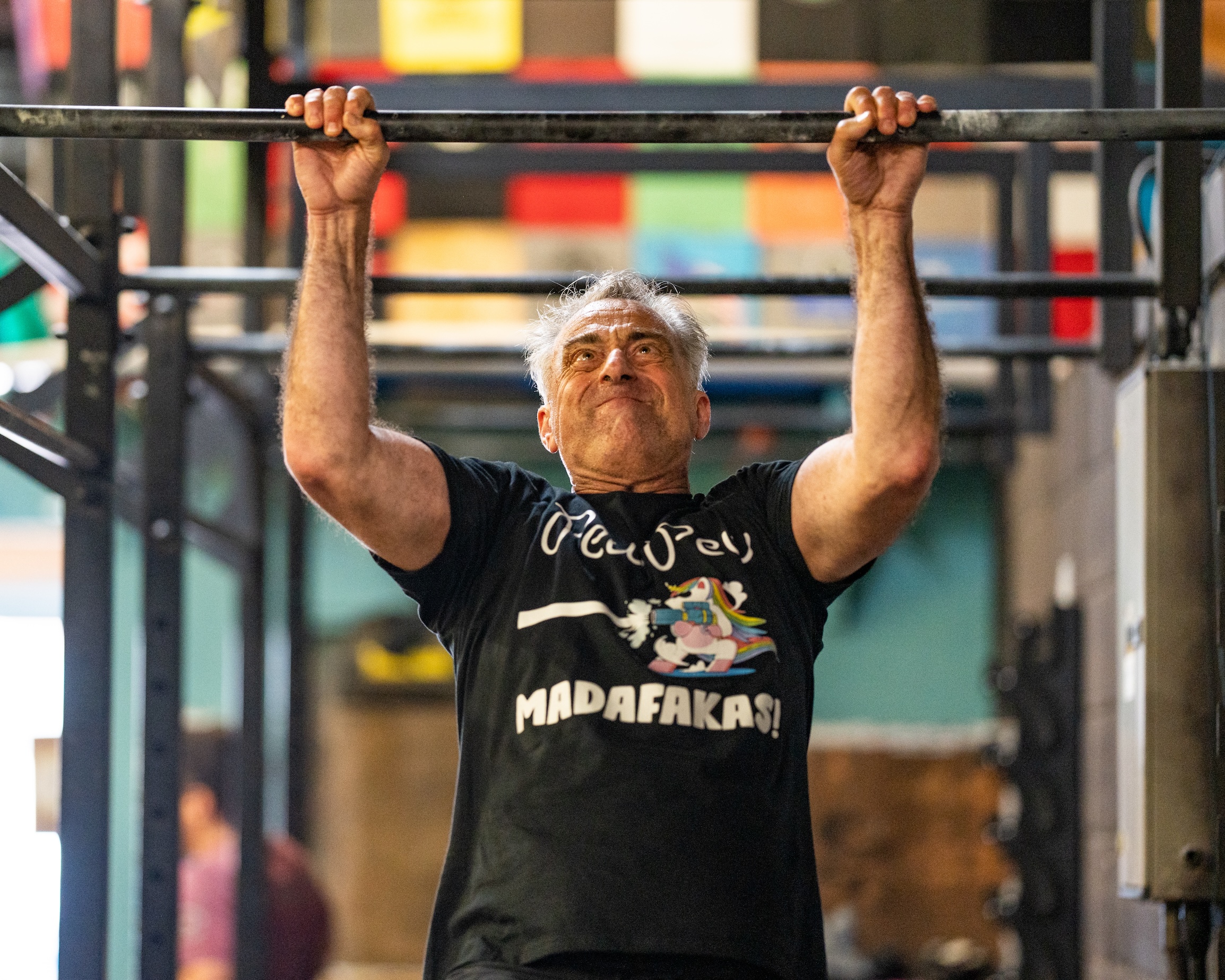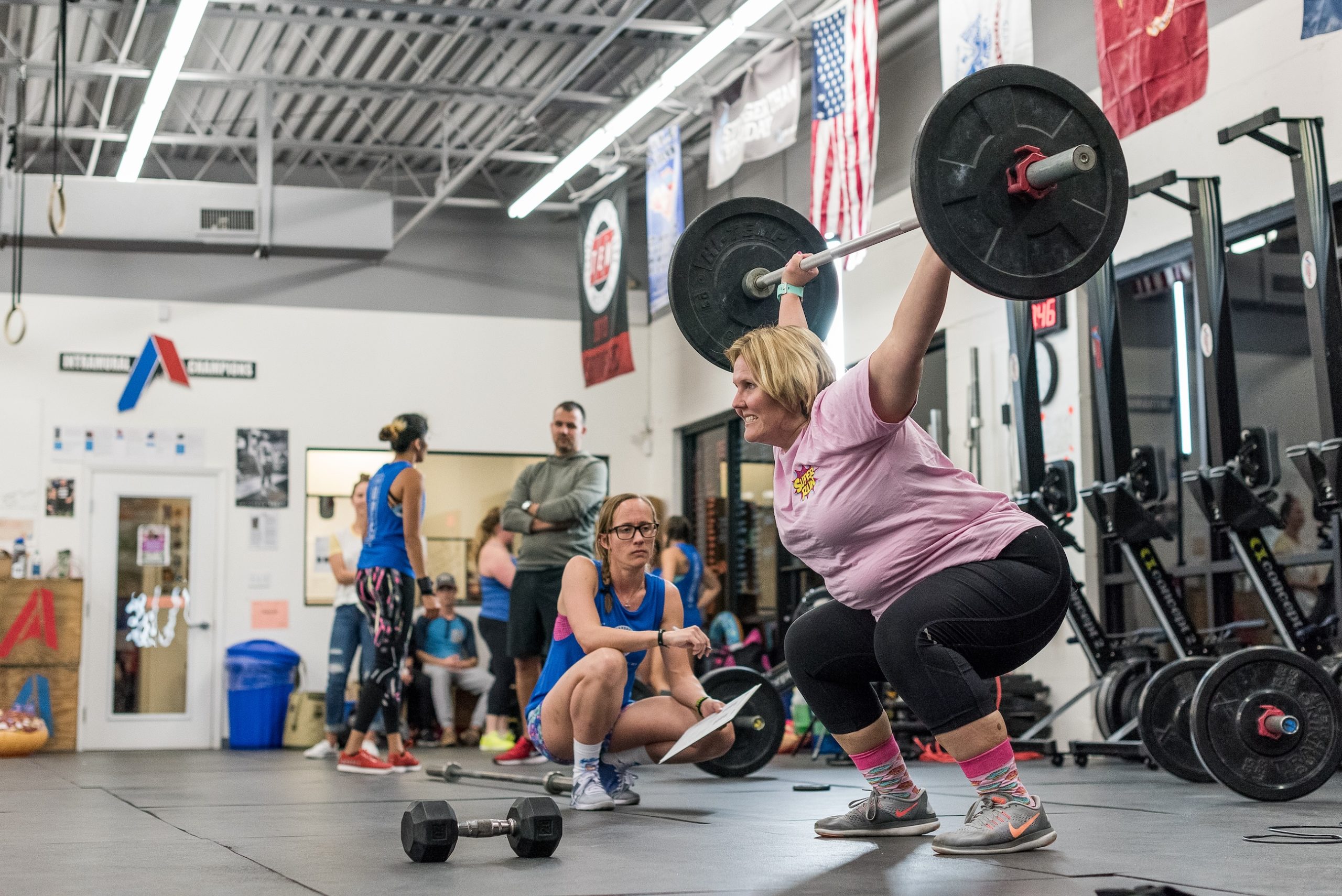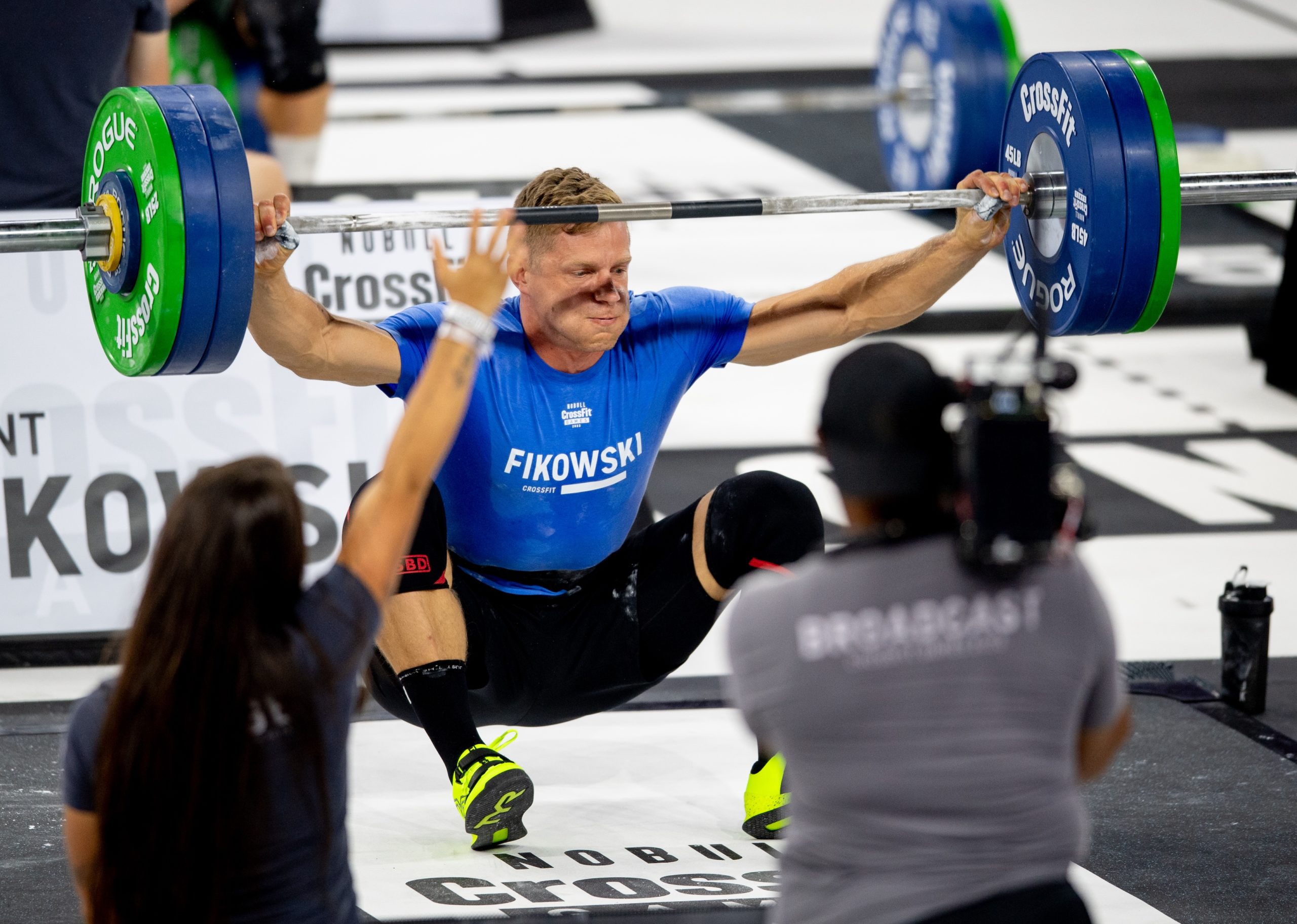I’ve always been more quit than grit.
When I played soccer as a kid, all it took was a 10-meter sprint to send me to the sideline, begging to be subbed out. My coach prescribed a daily jogging routine. I ran until I knew I was out of view of the kitchen window (and my mother) and walked the rest of the way.
In school, I was a smart student who often turned in sub-par work because I’d procrastinated until the absolute last minute.
And all throughout my life, as long as I can remember, I’ve started and stopped diets and workout regimens, beginning determined this would be the time I “really stuck to it,” and ultimately abandoning the plan for a tub of ice cream and the couch.
It wasn’t that I lacked ambition or liked being lazy. I just wanted to be comfortable.
Here’s the problem: Life is rarely comfortable. And the more you seek comfort, the less likely you’ll have the kind that really matters — like long-term physical and mental health and meaningful relationships. Such comforts are reaped from hard work sowed over time, again and again. From grit.
But what if you’re just not that gritty? If you’re not born with that never-quit attitude or a reservoir of resolve?
Can grit be developed? And if so, how?

Chris Spealler perseveres during Pendleton 1 at the 2012 CrossFit Games.
Grit: “Firmness of character; indomitable spirit; pluck.”
Angela Duckworth, Ph. D., is a professor of psychology, 2013 MacArthur Fellow, former management consultant at the prestigious McKinsey & Company global management consulting firm, and founder of the nonprofit Character Lab. She’s best known for her research on grit, by her definition a mix of passion and perseverance in the pursuit of a singular goal.
Duckworth has studied graduates (and dropouts) of the U.S. Military Academy West Point, U.S. Army Special Forces, finalists of the Scripps National Spelling Bee, salesmen, athletes, musicians, artists, mathematicians, and countless other experts and high achievers (in addition to the everyday students in her math classes at Lowell High School in San Francisco).
What she has found is indisputable evidence that when it comes to success, nothing — not talent, not opportunity, not luck — matters so much as grit.
“It was critically important—and not at all easy—to keep going after failure,” Duckworth writes in her 2016 New York Times bestselling book, “Grit.”
High achievers, she continues, “were satisfied being unsatisfied. Each was chasing something of unparalleled interest and importance, and it was the chase—as much as the capture—that was gratifying. Even if some of the things they had to do were boring, or frustrating, or even painful, they wouldn’t dream of giving up. Their passion was enduring.”
An important distinction: Grit is not necessarily about going all out or giving one tremendous effort to exhaustion. It’s about showing up each and every day, pushing just a fraction harder than what feels comfortable.
In her book, Duckworth challenged a 1940 Harvard study measuring “stamina and strength of will” via the Treadmill Test, in which subjects were asked to run on a steep incline at a blistering pace for up to five minutes. The average man (the study only examined men) lasted four minutes; others gave up after one and a half.
“If I’d been on the Harvard research team in 1940, I would have made a suggestion,” Duckworth writes. “I would have allowed the young men to come back the next day, if they wanted, and try the Treadmill Test again. … Staying on the treadmill is one thing, and I do think it’s related to staying true to our commitments even when we’re not comfortable. But getting back on the treadmill the next day, eager to try again, is in my view even more reflective of grit.
“Many of us, it seems, quit what we start far too early and far too often. Even more than the effort a gritty person puts in on a single day, what matters is that they wake up the next day, and the next, ready to get on that treadmill and keep going.”

Photo by RXd Photography.
Grit Grows
When I first read Duckworth’s account of the gritty — those who make it through the Green Beret’s grueling selection course, the Olympic swimmers who spend hours every day in the water, the authors who wake before dawn to write and rewrite — I felt discouraged.
People like that seem of another breed, I thought. Some people just seem born wired to work hard. And maybe that’s true, just like some people are born with an innate talent for the piano or with natural speed and grace.
But as Duckworth writes, “Our potential is one thing. What we do with it is quite another.”
She says that every human trait — including grit — is influenced by both genes and experience. And that means no matter how much we’re born with, we can grow it.
Over her years studying what high achievers — regardless of their backgrounds or innate talents — have in common, Duckworth came up with a sort of recipe for developing grit: interest, practice, purpose, and hope.
Interest: “Nobody works doggedly on something they don’t find intrinsically interesting.”
Practice: “After you’ve discovered and developed interest in a particular area, you must devote yourself to the sort of focused, full-hearted, challenge-exceeding-skill practice that leads to mastery. You must zero in on your weaknesses, and you must do so over and over again. … To be gritty is to resist complacency.”
Purpose: “What ripens passion is the conviction that your work matters.”
Hope: “From the very beginning to the very end, it is inestimably important to learn to keep going even when things are difficult, even when we have doubts. At various points, in big ways and small, we get knocked down. If we stay down, grit loses. If we get up, grit prevails.”
All these ingredients, Duckworth writes, can be cultivated. And there are myriad ways to do so.
But there’s one surefire way to develop grit and get twice the bang for your buck: Train CrossFit.

“CrossFit both attracts and develops grit.”
Gritty people do CrossFit.
Consider CrossFit Games athletes. Not only do they complete multiple and varied amazing feats of athleticism across several days at the CrossFit Games, but they also spend the entire year, year after year, preparing to do so. Daily, diligent, demanding effort.
Many of the top CrossFit athletes excelled at other sports before discovering CrossFit, and many of the hundreds of thousands of people who work out in CrossFit gyms around the world do other hard things as well — so yes, as CrossFit’s Chief Brand Officer Nicole Carroll writes, CrossFit attracts grit.
But here’s the wonderful, encouraging, hopeful thing: CrossFit develops grit, too, Carroll continues.
“When you push yourself to your limit, when you work right at your edge, it isn’t always pretty. Your tidy, protective layers go out the window. You let people see who you really are. This is true vulnerability, raw and real,” she writes.
She continues: “CrossFit offers access to something typically available only to those performing at an elite level: the opportunity to step beyond a threshold of effort and comfort, to commit fully, and to really, truly stretch yourself. Every single person who does a CrossFit workout, no matter their age or their ability, has this opportunity in front of them. CrossFit is a safe place to push yourself into new territory of being.”
Let’s revisit Duckworth’s formula for a second.
Interest: Even — dare I say especially — people who have never worked out or played a sport before find CrossFit fun. Every class, every workout is an opportunity to learn something new, try a new strategy, and discover unknown strengths.
Practice: Three to six times per week, CrossFit athletes come together — often at the same time and in the same groups each day — and practice the “daily discipline of trying to do things better than we did yesterday,” as Duckworth writes.
CrossFit is not absentmindedly jogging on a treadmill in front of a television or reps repeated just for the sake of tallying them up. A CrossFit class is an exercise in deliberate practice: You will set goals and receive expert coaching. Through conscious effort and repeated practice, you will improve, make new mistakes, learn from them, and come back the next day just a little bit better.
Purpose: Lots of people start CrossFit because they want to look a little better naked. But what keeps them coming back is something far more meaningful. They get a taste for what it feels like to be powerful, and to become more capable and healthy for themselves and the people they love. People do CrossFit to live better, longer.
Hope: Duckworth writes: “Grit depends on a different kind of hope. It rests on the expectation that our own efforts can improve our future. I have a feeling tomorrow will be better is different from I resolve to make tomorrow better. The hope that gritty people have has nothing to do with luck and everything to do with getting up again.”
In CrossFit, our rewards are directly proportional to our efforts. We may fail this lift or not finish that workout today, but as long as we keep showing up, there will come a time when we will.

Photo by Ginnie Coleman.
Why We Practice Hard Things
You are not obligated to be gritty. It’s not a moral imperative. But life will come at you either way.
Erika Ryerson, 39, is a mother of three. She joined CrossFit Contrivance in Apex, North Carolina, in the spring of 2018. She was diagnosed with leukemia in November 2021.
“On Monday, the doctor’s office called me and said, ‘You need to come in and see the oncologist,’” Ryerson recalled. “And the next day, they called and said, ‘You need to pack a bag and go check into the emergency room. … And so we packed a bag thinking we’re going to the hospital for one night … and (I) didn’t come home for a month.”
Most of the cancer patients on the hospital floor where Ryerson stayed were bedridden. Few expected to leave.
But because of her high level of fitness, the chemotherapy — while still a “miserable drug” that made her nauseous and exhausted and kept her in chronic pain — didn’t keep her down.
Ryerson set specific goals each day to eat, drink, and move. Every morning she walked a lap of the cancer floor. By the time she was discharged for outpatient treatment, she’d walked five marathons.
Yet Ryerson would say she’s not a naturally gritty person.
“I don’t consider myself to be a mentally tough person,” she said. “So doing CrossFit was a big challenge for me, and it was really uncomfortable because you’re doing these things that you don’t know how to do around all these people that you don’t know who are 10 times better than you.”
At first.
“Then you learn, like, ‘Oh, this isn’t so bad,’” she continued. “I can do this. I can keep pushing myself. … I’ve kind of just adapted that mindset, and I really think it’s helped to get through the last two years.”
Ryerson’s husband, Tim Ryerson — who also trains at CrossFit Contrivance — said CrossFit has helped Erika develop confidence and perseverance.
“I feel like in every workout you kind of get to a point where … you have a choice: You can give up or you can finish,” Tim said. “And what I learn from doing it is every single day, when you get to that point and you either quit or keep going, you’re training a muscle to either quit or don’t quit. And you do that so many times for so many years and then you get something like really hard, like a cancer diagnosis, that muscle’s ready for that.”
Eleven months after her diagnosis, tests declared Erika leukemia-free.

Photo courtesy of Erika Ryerson.
All You Need Is a Grain
On Oct. 3 of this year, a busload of my CrossFit HQ colleagues and I pulled up to the base of the iconic hill at The Ranch in Aromas, California, where scores of CrossFit Games athletes have shed blood, sweat, and tears in the name of fitness.
We were there to work out, and based on the orange pylons dotting the dusty ascent, we’d be running the hill.
My heart both leaped with excitement and sank just a bit. Six months prior, I’d been in better shape than the last several years; 89 pounds down from 329 and doing things in the gym I hadn’t done in ages.
But I lost my grit in a summer filled with personal challenges, and I’d put a big chunk of that weight back on. I couldn’t run 400 flat meters, let alone sprint the Aromas foothills.
But one thing I’ve learned over a decade of CrossFit is being gritty doesn’t mean never failing — and it also doesn’t mean feeling mentally strong all the time. Grit, like everything in CrossFit, is scalable. Sometimes it looks like Rx’d scores and PRs; sometimes it looks like not giving up.
I didn’t feel mentally strong that day in Aromas. But I decided that of the workout’s three runs — sandwiched by 15 deadlifts each time — I would make it to the peak once. No matter how slowly I went or how long it took, I would summit that hill once before scaling the “run” to half the distance.
I’m not sure how many minutes it took, I just know that by the time I finished the first ascent, most of my comrades were starting their second.
But I did see the view from the top of the slope — and while that one trek wouldn’t make me a Green Beret or a CrossFit Games athlete, it proved that despite my struggles, I still have a grain of grit in me.
And as long as I — as long as you — keep showing up and remain satisfied being unsatisfied, a grain is all it takes.
“The main thing is that greatness is doable,” Duckworth quoted sociologist Dan Chambliss.
“Greatness is many, many individual feats, and each of them is doable.”
Cover photo by The Michael Patrick Studio.
About the Author
Brittney Saline is Senior Writer and Editor for CrossFit, LLC. Previously, she was a writer and editor for the CrossFit Journal. She’s been sharing powerful stories from and for the CrossFit community since 2012, covering topics ranging from problems with healthcare and Big Pharma to CrossFit’s potential for reversing symptoms of Parkinson’s disease to discourses on femininity and musculature. She lives in Minneapolis, Minnesota, with her pug, Leo. Got a story to share? Email Brittney here.
Comments on How To Do Hard Things
Fantastic article. Love content on the mental/character elements of CrossFit!
Totally awesome!🤘🏻💯
Great article well said!🏋️♀️
Just do it, that’s all.
👍🏻

How To Do Hard Things
5